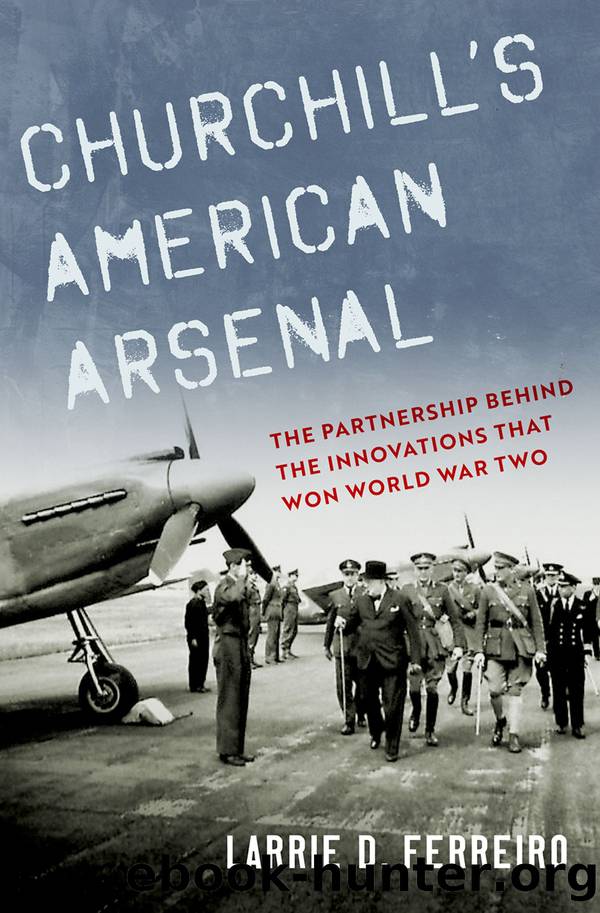Churchill's American Arsenal by Larrie D. Ferreiro

Author:Larrie D. Ferreiro
Language: eng
Format: epub
Publisher: Oxford University Press
Published: 2022-01-15T00:00:00+00:00
âLarge Armoured Irruptionsâ
That future use materialized in World War Two, when the concept of tank-carrying landing craft was revived just after the Dunkirk evacuations. During Churchillâs tenure as First Lord of the Admiralty under Neville Chamberlain, the Royal Navy had embarked on several commando raids that attacked targets in France, and (with French and Polish forces) carried out amphibious assaults in Norway. These latter were ultimately repulsed, forcing the Allies to abandon their goal of capturing the critical port of Narvik. For these raids, commandos and marines had used small craft built by Thornycroft shipyards, which could carry a few dozen troops and light vehicles, but no heavy equipment.
The need for landing craft that could also transport heavy tanks and vehicles became apparent at Dunkirk, which, in a certain sense, was an amphibious assault in reverse. The evacuation of 338,000 troops was accomplished in part with craft little removed from the rowboats at Gallipoli, but as already noted, it left tens of thousands of tanks, artillery, and vehicles behind. Churchill, now of course prime minister, realized the lack of any vessels to transport armor and equipment from the French beaches had left Britain almost defenseless. He also realized that such vessels would be needed to recapture France and Europe.
On June 6, 1940, Churchill revived his quarter-century-old idea of tank-carrying landing craft in a carefully crafted minute to his chief of staff, Pug Ismay, ordering him to submit proposals âfor a vigorous, enterprising and ceaseless offensive against the whole German-occupied coastline.â In particular, Churchill wanted âflat-bottomed boats,â out of which tanks and armored vehicles âcan crawl ashore, do a deep raid inland, and then back.â Over the next several weeks, not quite certain if the Admiralty or the Ministry of Supply should be in charge, he continued to hound both Ismay and his minister of supply, Herbert Morrison, for details on âwhat is being done about designing and planning vessels to transport tanks across the seaâ and land them on beaches.6
At first, it would be neither. In July, Churchill created the Combined Operations Command, tasked with carrying out amphibious raids on the Continent using navy, army, and commando forces. This was simultaneous with the creation of the Special Operations Executive, and though both initially accomplished similar goals of laying the groundwork for a major assault, as outlined in the previously mentioned Appreciation of Future Strategy paper, the Special Operations forces were often parachuted into enemy territory, while Combined Operations focused on coastal assaults. The first director of Combined Operations was Admiral of the Fleet Roger Keyes (replaced in 1941 by Louis Mountbatten), who began expanding Britainâs amphibious capabilities from small-scale raids to âlarge armoured irruptionsâ on the Continent, as Churchill noted in The Second World War. Keyes took charge of the landing craft project, instructing his staff to work with the naval architects at the Directorate of Naval Construction to turn Churchillâs ideas into actual vessels.7
The naval architect who forged Churchillâs concept into steel was Rowland Baker, a member of the
Download
This site does not store any files on its server. We only index and link to content provided by other sites. Please contact the content providers to delete copyright contents if any and email us, we'll remove relevant links or contents immediately.
Verus Israel: Study of the Relations Between Christians and Jews in the Roman Empire, AD 135-425 by Marcel Simon(578)
Phoenicians among Others: Why Migrants Mattered in the Ancient Mediterranean by Denise Demetriou(577)
Caesar Rules: The Emperor in the Changing Roman World (c. 50 BC â AD 565) by Olivier Hekster(558)
Europe, Strategy and Armed Forces by Sven Biscop Jo Coelmont(504)
american english file 1 student book 3rd edition by Unknown(483)
Give Me Liberty, Seventh Edition by Foner Eric & DuVal Kathleen & McGirr Lisa(469)
Banned in the U.S.A. : A Reference Guide to Book Censorship in Schools and Public Libraries by Herbert N. Foerstel(469)
Basic japanese A grammar and workbook by Unknown(460)
The Roman World 44 BC-AD 180 by Martin Goodman(459)
Reading Colonial Japan by Mason Michele;Lee Helen;(457)
DS001-THE MAN OF BRONZE by J.R.A(444)
The Dangerous Life and Ideas of Diogenes the Cynic by Jean-Manuel Roubineau(440)
Introducing Christian Ethics by Samuel Wells and Ben Quash with Rebekah Eklund(436)
Imperial Rome AD 193 - 284 by Ando Clifford(433)
The Oxford History of World War II by Richard Overy(432)
Literary Mathematics by Michael Gavin;(392)
Language Hacking Mandarin by Benny Lewis & Dr. Licheng Gu(380)
Catiline by Henrik Ibsen--Delphi Classics (Illustrated) by Henrik Ibsen(369)
How to Reach the 9.0 in IELTS Academic Reading by IELTS Medical(358)
